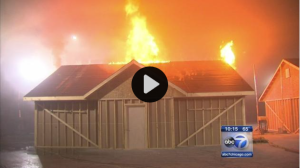In a real blow for an industry constantly trying to remain hip and relevant, many Facebook users were notified of “46 year anniversaries” of their relationships with friends on Facebook on the last day of 2015. Facebook (which is itself only 11 years old) issued a statement saying “We’ve identified this bug and the team’s fixing it now so everyone can ring in 2016 feeling young again.”

The next step in the Cause Mapping process is the analysis. The Cause Map begins with an impacted goal. Asking “Why” questions develops the cause-and-effect relationship that resulted in the effect. In this case, the impact to the customer service goal results from the negative publicity. Continuing to ask “Why” questions will add more detail to the Cause Map. The negative publicity was caused by Facebook posting incorrect anniversaries.
Some effects will result from more than one cause. Facebook posting incorrect anniversaries can be considered an effect that was caused by incorrect anniversary dates being identified by Facebook AND Facebook posting anniversary dates. Because both of these causes were required to produce an effect, they are joined with an “AND” on the Cause Map. (If the anniversary dates had been identified correctly, or if they weren’t posted on Facebook, the issue would not have occurred.) The incorrect anniversary dates were due to a software glitch (or bug), according to Facebook. Inadequate testing can generally be considered a cause whenever any bug is found in software that is used or released to the public. Had a larger range of dates been used to test this feature, the software glitch would have been identified before it resulted in public postings on Facebook.
Other impacted goals are added to the Cause Map as effects of the appropriate goals. In this case, the labor/ time goal is impacted because of the time needed to fix the glitch. The cause of this is the software glitch. All impacted goals should be added to the Cause Map.
The cause of the software bug is not definitively known. To indicate potential causes, we include a “?” after the cause, and include as much evidence as possible to support the cause. Testimony can be used as evidence for causes. In this case, the source of the potential causes is a Microsoft engineer, who described a potential scenario that could lead to this issue on Facebook. Unix, which is an operating system, associates the value of “0” with the date of 1/1/1970 (known as the Unix epoch). If the date a user friended another user was entered as “0” and the system identified friending dates for all friends, the system would identify friending dates as 1/1/970, and with some accounting for time zones, would see 46 years of friendship on December 31, 2015. It is presumed that the friend date would be entered as “0” if a friendship already existed prior to Facebook tracking anniversaries.
Errors associated with the Unix epoch are pretty common, but this appears to be the first time a bug like this has bitten Facebook. Presumably the error was quickly fixed, but we won’t know for sure until next December.










